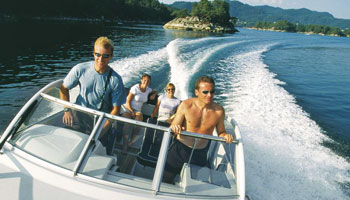Two Stroke Oil Differences

When it comes to two stroke oil, there are different formulations depending on the kind of engine in which it is used. For example, two stroke oil designed for use in outboard engines (often called outboard oil), is formulated to operate with water present. In contrast, two stroke oil designed for use in a standard lawnmower will not be formulated in this manner. It’s important to double check the formulation of two stroke oil before you put it in the engine. While it might not be so dangerous for oil in a lawnmower to contain an additive allowing it to function with the presence of water, if oil bereft of this additive was used in an outboard engine, it could cause serious problems.
Most of the different formulations of two stroke oil are available in hardware stores, but if you’re looking for a specific brand it’s best to check in a location that sells similar engine products; for example, a gardening store will likely have two stroke oil for use in lawnmowers, weed cutters, and chainsaws.







 When choosing what kind of oil to use in your outboard engine, it’s not always wise to go with whatever’s cheap. In order to keep your motor running smoothly and for quite some time, do a little research into what type of oil will best suit your boat. Don’t scrimp on oil, because it will just cause you problems later.
When choosing what kind of oil to use in your outboard engine, it’s not always wise to go with whatever’s cheap. In order to keep your motor running smoothly and for quite some time, do a little research into what type of oil will best suit your boat. Don’t scrimp on oil, because it will just cause you problems later. As autumn ushers in the cold weather that can be destructive to outboard motors, boat owners should think about the steps it takes to prepare their vessels for winter. The first step in getting an outboard motor ready for the winter is to remove all remaining gas from the carburetor – either by adding a gas stabilizer and running the engine until it dies, or draining and storing the gas for next season. Once the gas has been emptied, it’s safe to remove the motor and begin draining and refilling the lower gear unit.
As autumn ushers in the cold weather that can be destructive to outboard motors, boat owners should think about the steps it takes to prepare their vessels for winter. The first step in getting an outboard motor ready for the winter is to remove all remaining gas from the carburetor – either by adding a gas stabilizer and running the engine until it dies, or draining and storing the gas for next season. Once the gas has been emptied, it’s safe to remove the motor and begin draining and refilling the lower gear unit.


